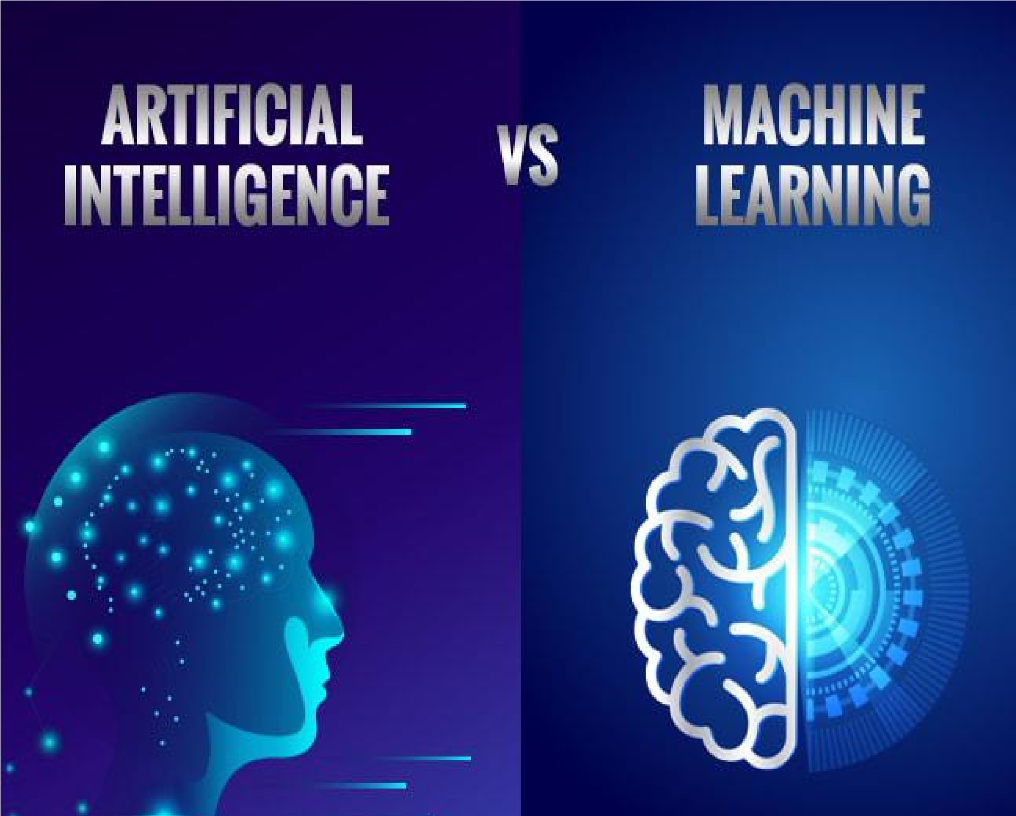
We are able to use Google Maps to foresee the live traffic updates, applications, smartphones, autonomous cars, and more. which makes our lives more efficient and more efficient. All of this is due to AI and machine learning. (AI) which makes our lives easier and more convenient. Machine learning (ML).
What’s artificial intelligence?
It’s computer technology that is able to think like we do. This ability can solve any issue by linking items and analyzing their connections, as well as the ability to make sense of them. The insights stored in the memory help in determining an idea of how to solve the problem.
History and Evolution
Alan Turing is the father of AI and the idea that led to the Turing Test. Turing Test in the 1950s. His research led to the creation of the first computer to break codes, which became highly acclaimed in the course of World War II. This invention helped allies to understand the secrets that were being sent by the German military. German military.
The idea gradually gained the forefront. It allowed machines to think as we do. This could only be achieved by passing the Turing Test. Simply said, if the machine can respond to questions the way we do, then it will be able to pass the test.
In order to achieve this capability, computer systems are equipped to comprehend the intentions of people, make logical decisions, and then adapt to changes in the environment. These capabilities rely on mathematical reasoning and data-driven logic to arrive at an answer that is practical. Or, it could be a figment of imagination.
Typically Utilized AI Applications
AI-driven technologies create a new universe of robotics. Since its inception, Robotic Process Automation (RPA) technology has been growing. It helps insurance companies or any other user-related industry or company analyze risks more efficiently. The most commonly used AI applications are:
- Google Search Engine
- Tesla’s self-driving vehicles or auto-run models. Tesla
- Personalized recommendations, such as those you can see on YouTube or eCommerce sites
- Personal voice assistants such as Google Voice, Amazon Alexa, and Siri from Apple. Siri
Types of Artificial Intelligence (AI)
Narrow AI
The application or system that has end-to-end or specific functions that are predefined completely is Narrow AI. Chatbots, for example, can respond automatically to the question of an online user.
General AI
General AI is an advanced version that includes machine learning systems that draw patterns, intuitive learning, and comprehend the implications. It is certainly more efficient in thinking, assessing, and making any alignments in a more efficient manner.
While AI is evolving and can be replicated in a way, it is not able to completely mimic the human experience. The instincts or feelings that are natural (as they are present in human beings) are not present.
What’s machine learning (ML)?
Machine learning is an aspect of AI that aids in building algorithms or designing models. Data collection provides the provision of data samples and is also known for its training information.
ML models enhance machines by providing data-driven insights that aid in forecasting downs, ups, as well as trends, and the intentions of an individual. Forecasting is done automatically with the help of databases that contain a variety of structured and semi-structured datasets. They provide insights to analyze and make informed decisions on options, strategies, or viable solutions.
History and Evolution
The idea was first introduced in 1959 thanks to Arthur Samuel. Samuel created AI along with computer gaming with ML. His inventions allowed computers to continue learning without programming or programming re-programming.
The idea of his creator has opened machines to a revolutionary ML model that allows algorithms to constantly adapt, learn, and evolve independently. This model process helps machines by facilitating an ongoing learning process that generates intelligence.
A growing number of businesses are investing in these technologies as they seek to boost efficiency as well as productivity, and revenue at the lowest cost. These models of machine learning can aid in rapid decision-making, forecasting analysis, analyzing, and discovering new patterns or relationships using information.
Distinction Types of ML
It comes with an additional kind that you can compare with the AI. Data scientists are the best experts to work with to utilize their particular type according to the objective or purpose.
Supervised ML
This kind of machine learning model makes use of labeled data to build algorithms. It can categorize data, analyze to compare, and predict the result precisely. This kind of learning makes use of very specific inputs and results.
Unsupervised ML
Unsupervised ML creates and creates unlabeled datasets. The machine learning models look through them to find significant correlations between models. In this instance, the unlabeled datasets as well as outputs are determined prior to.
Reinforcement Learning
Reinforcement learning is a process that requires human interaction. Data scientists must learn ML to be able to fully run a multi-step process. There is no doubt that a predetermined set of guidelines or protocols is established to be followed. The program of a scientist’s ML models can be run through the entire cycle of the preset and provide either positive or negative feedback about their performance.
Typical ML Applications
There are a variety of well-known businesses and brands, such as Amazon, Google, and Facebook, that utilize these models to achieve their business goals. Navigation, for instance, which is automatically activated and established by the Google Maps app on a smartphone or desktop, is admirable. It assists users in predicting the flow of traffic and suggests the best routes.
Here are some applications that support ML:
- Email filtering Feature
- Speech recognition is available on any app or device
- Computer vision (CV)
- The detection of fraud and/or spam in insurance or banking applications
- Predictive analysis
- Malware threat detection
- Automating business process (BPA)
Artificial Intelligence and Machine Learning Differ
There are some distinctions. The following information will show the difference and why you should not apply the two terms interchangeably.
Types of ML may be considered to be AI; however, not all kinds of AI are ML.
AI is powered by machine learning, which incorporates human intelligence to an extent that it can discover endless possibilities. However, it is more specific in the sense of a procedure. It is a narrow field.
Researchers and data scientists can improve AI to the point that it is able to behave as a human. However, ML trains machines to meet specific objectives or tasks and produce outputs as desired.
AI is successful, but the key to success is accuracy
If you’re talking about AI, this is more crucial to attain success. On the other hand, ML requires a high accuracy in data, which is a key aspect of finding patterns. The success factor is not a factor when it comes to ML.
According to the goal, AI is dedicated to providing users with the best solutions, while ML simply ensures that it can find solutions. It doesn’t matter if the solutions are efficient or not.
Unique outcomes
In the quest to achieve the desired outcomes, AI comes first. Different techniques of logic and mathematical logic are the mainstay to achieve success. Contrary to what they say, ML can only learn to adapt, self-correct, or self-correct due to its limitations.
It is possible to get an outcome that is predetermined by ML models. However, when it comes to AI, it is able to do everything. AI can draw on intelligence, which allows it to achieve more than just a result.
Simply stated, ML can forecast through analysis (as in sales). However, AI can bring a variety of benefits and results that could not be forecasted prior to. now
Summary
Artificial Intelligence and Machine Learning Differentiate from one another. AI is more focused on having success and achieving results that aren’t always predicted. However, ML is limited in terms of results and methods. It is able to only learn, adapt, or auto-correct its own. It’s only possible to get the results you want with machine learning.



